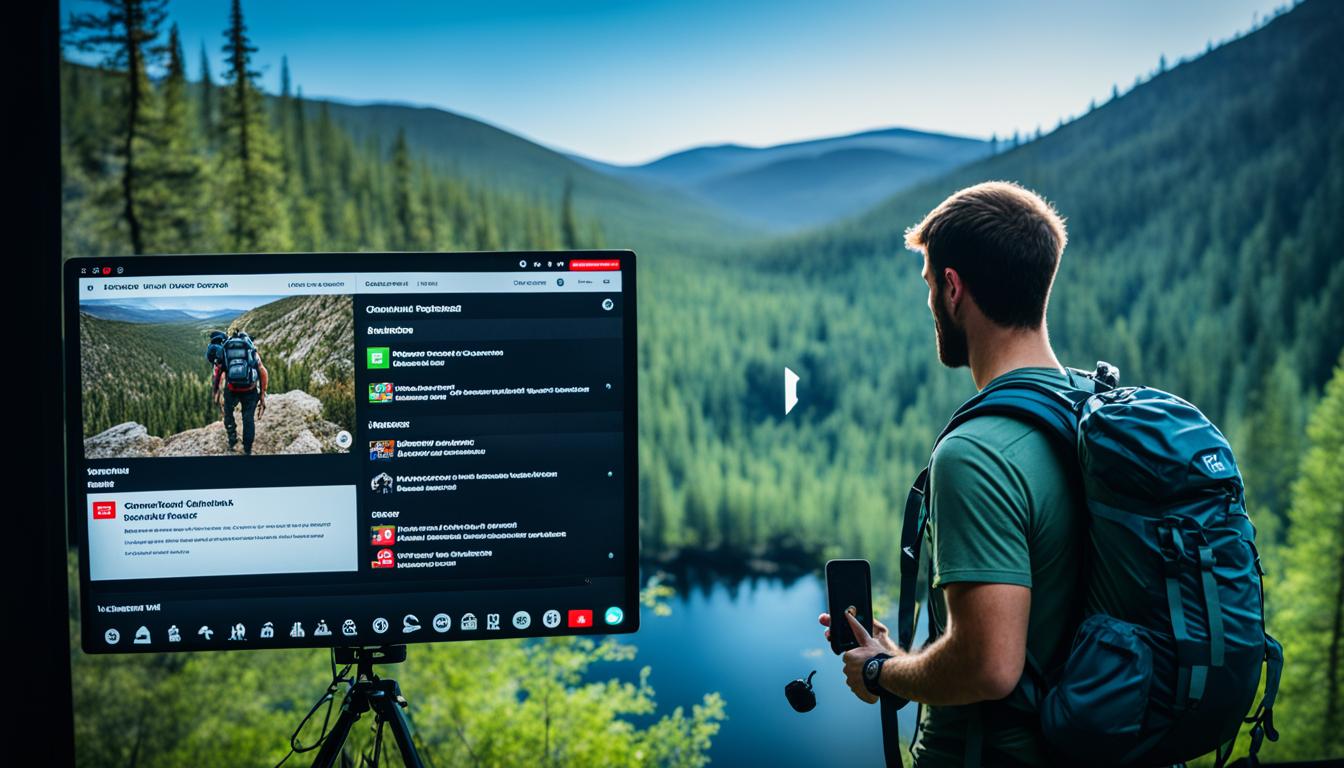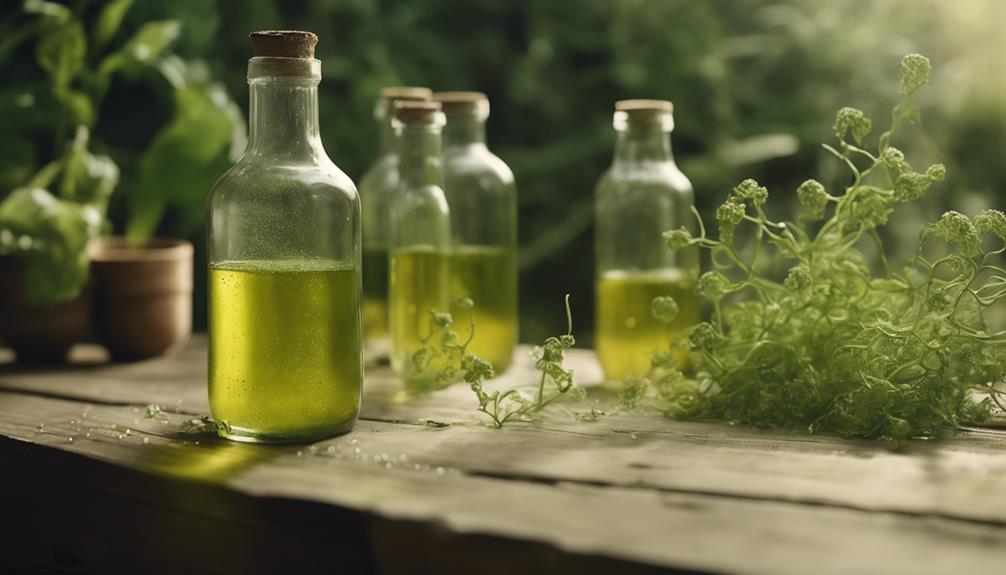To establish a well-stocked pantry, start by evaluating your current food inventory and identifying essential items to prioritize. Consider your dietary needs, available storage space, and budget to stockpile grains, proteins, and fats. Focus on shelf-stable foods like rice, pasta, and canned goods, and don't forget to include spices and fats for nutrition and flavor. Organize your storage space by assigning a home for each item, utilizing underused areas, and labeling shelves for easy inventory and rotation. By thoughtfully building your pantry, you'll guarantee a reliable food supply during emergencies and take the first step towards being prepared. Ahead, discover the key components of a well-stocked pantry.
Key Takeaways
- Set a budget and prioritize essential items like grains, proteins, and fats to ensure a well-stocked pantry for emergencies.
- Stockpile shelf-stable foods like canned goods, rice, pasta, and oats that align with dietary needs and provide long-term storage.
- Organize storage space by assigning a home for each item, utilizing underused spaces, and labeling shelves or containers for clear inventory and rotation.
- Implement the FIFO method to rotate stock, consuming older items first, and regularly check for spoilage, pests, or damage to maintain a fresh pantry.
- Consider food preservation methods like canning, dehydration, and fermentation to minimize food waste and build a reliable pantry for emergencies.
Building a Well-Stocked Pantry
As you begin building your well-stocked pantry, check your current food inventory to determine what essential items you already have on hand. This will help you identify what's missing and create a plan to stock up on non-perishable items that align with your dietary preferences and needs.
Consider the storage space available in your home before purchasing items in bulk, making sure you have enough room for long-term storage. Set a budget and prioritize essential items, such as grains, proteins, and fats, to stock up on gradually. This will help you avoid overspending and make sure you're getting the most out of your pantry.
When selecting items, focus on shelf-stable foods that won't expire quickly, and consider your dietary needs and restrictions. By taking a thoughtful approach to building your pantry, you'll be well-prepared for any situation, and your wallet will thank you.
Essential Food Items to Store

When starting to build your prepper's pantry, it's crucial to focus on storing the right food items that will provide sustenance and nutrition in emergency situations.
You'll want to prioritize grain staples like rice and pasta, which are compact, nutritious, and easy to store for extended periods.
Grain Staples Essential
You'll want to stockpile grain staples like rice, pasta, flour, and oats, which are essential items to store in your pantry due to their long shelf life and versatility.
These grains can be stored easily in airtight containers or mylar bags to guarantee their freshness for extended periods.
Rice, in particular, is a popular choice for preppers as it provides a high caloric value and can be used in a variety of dishes.
Flour, another versatile ingredient, can be used for baking bread, making pasta, or thickening soups and stews in emergency situations.
Oats are a nutritious option that can be used for breakfast, baking, or making homemade granola bars for a quick energy boost.
By storing these grain staples, you'll be well-prepared to face any situation, whether it's a natural disaster or economic downturn.
With their long shelf life and adaptability, grains are a vital component of any prepper's pantry.
Canned Goods Variety
By stockpiling a variety of canned goods, you're guaranteeing a reliable food supply during emergencies, with options ranging from fruits and vegetables to meats and soups.
Since canned goods have a long shelf life, often lasting for years, they're ideal for emergency preparedness. You can store them in your pantry without worrying about refrigeration until they're opened. This convenience, combined with their versatility, makes canned goods a staple for your extensive emergency food supply.
You can use them to create a variety of meals, from hearty soups to nutritious salads. With canned goods, you'll have a reliable and accessible food supply during emergencies, giving you peace of mind.
When building your pantry, consider stocking up on canned fruits, vegetables, meats, and soups to ensure you're prepared for any situation. By doing so, you'll be well on your way to creating a detailed emergency food supply that will last for years to come.
Stocking Up on Grains and Beans

What role do grains and beans play in your emergency food storage, and how can you stock up strategically? As a prepper, you know that grains and beans are pantry staples that provide essential carbohydrates, proteins, and fiber for a diverse diet during emergencies. Grains like rice, pasta, and oats are rich in carbohydrates, while beans and legumes such as pinto beans, black beans, and chickpeas offer plant-based proteins and fiber.
| Grain/Bean | Shelf Life | Storage Tips |
|---|---|---|
| Brown Rice | 2-3 years | Airtight container, cool, dry place |
| Canned Black Beans | 2-5 years | Store in pantry, avoid direct sunlight |
| Oats | 6-12 months | Airtight container, cool, dry place |
| Canned Kidney Beans | 2-5 years | Store in pantry, avoid direct sunlight |
| Quinoa | 2-3 years | Airtight container, cool, dry place |
Fats and Spices for Long-Term Storage

As you focus on building your prepper's pantry, it's crucial to take into account the critical roles that fats and spices play in sustaining you during an emergency.
You'll want to stock up on essential fats like canned meat, TVP, and dry-cured meats, which provide crucial calories and nutrients, as well as a variety of spices that add flavor and versatility to your pantry meals.
Essential Fats for Health
When building your pantry, don't overlook essential fats like canned meat, textured vegetable protein (TVP), and dry-cured meat products, which provide an important source of energy and nutrients for a well-rounded diet in emergency situations.
You'll want to stock up on these fats to guarantee a balanced diet and access to essential nutrients during extended periods of uncertainty. By incorporating these fats into your long-term storage, you'll be able to prepare a variety of meals that are both nutritious and satisfying.
Properly stored, these fats can last for extended periods, making them a valuable addition to your pantry. Additionally, they'll provide you with the flexibility to prepare a range of meals, from hearty stews to satisfying snacks.
With a well-stocked pantry that includes essential fats, you'll be better equipped to handle whatever challenges come your way, confident in the knowledge that you have a reliable source of nutrition at your fingertips.
Optimal Spice Blends
You can elevate the flavor and nutrition of your stored meals by incorporating ideal spice blends and fats into your long-term food storage. Properly stored spices can last for 1-2 years, making them a valuable addition to your pantry. Consider creating custom spice blends or purchasing pre-made blends to suit your taste preferences. Essential spices like salt, pepper, garlic powder, and dried herbs are must-haves for seasoning canned or preserved foods.
| Spice Blend | Description |
|---|---|
| Italian Seasoning | A classic blend of herbs like basil, oregano, and thyme |
| Curry Powder | A warm, aromatic blend of spices like turmeric, cumin, and coriander |
| Chili Powder | A spicy blend of chili peppers, garlic, and cumin |
| Lemon Pepper | A bright, citrusy blend of lemon zest, black pepper, and herbs |
When selecting spice blends, look for those that are specifically designed for long-term storage. Fats like oil, ghee, or butter powder can also enhance the flavor and nutritional value of your stored meals. By incorporating these essential ingredients into your pantry, you'll be well-prepared to whip up delicious, nutritious meals in any situation.
Canned and Dried Fruits and Vegetables

Stocking up on canned and dried fruits and vegetables is a savvy move, since they're packed with nutrients and offer a shelf life of up to 5 years. As a prepper, you'll appreciate the extended period of time these foods remain shelf-stable, making them ideal for your pantry.
Canned fruits and vegetables retain their nutritional value for up to 2-5 years, providing essential vitamins and minerals for a balanced diet. Dried fruits like raisins and apricots are rich in fiber and antioxidants, making them a great snack option. Don't forget about canned tomatoes – versatile for sauces, soups, and stews. Dried vegetables, such as kale chips or sun-dried tomatoes, offer convenient snacking options.
When it comes to food preservation, canned and dried fruits and vegetables are a great choice for long-term storage. By incorporating these into your prepper pantry, you'll be well-prepared for an extended period of time.
Beverages for Emergency Situations

In addition to a well-stocked pantry, having a supply of beverages on hand can be a lifesaver in emergency situations. You should stockpile water bottles, making sure at least a gallon per person per day, and consider adding powdered drink mixes or electrolyte packets to help meet your hydration needs.
Don't forget to include long-lasting beverages like shelf-stable milk, coffee, tea, and juice boxes in your stockpile. Rotate through your stored beverages regularly to maintain their freshness and quality.
When storing water, make sure to use sturdy containers and keep them away from direct sunlight and chemicals. This will help prevent contamination and guarantee the water remains safe to drink.
Methods for Food Preservation

Canning, dehydrating, curing, and fermenting are all effective methods for preserving food, allowing you to enjoy seasonal produce year-round and build a reliable pantry for emergency situations.
By mastering these techniques, you'll minimize food wastage and establish a well-stocked pantry when emergencies arise. Moreover, understanding proper storage methods ensures that your ingredients maintain their freshness for longer, helping you stretch your resources further. It’s also beneficial to familiarize yourself with sustainable food practices, such as learning how forage harvesters function to gather crops efficiently and reduce waste during harvesting. Incorporating these skills can drastically enhance your ability to prepare and remain self-sufficient in challenging situations. Incorporating these practices into your routine not only reduces waste but also promotes a more sustainable lifestyle, contributing to environmental conservation. Additionally, knowing how forage harvesters function gives you valuable insight into modern agricultural techniques, enabling you to make informed decisions about food sourcing and preservation. By combining this knowledge with thoughtful preparation, you’ll be better equipped to handle unforeseen disruptions while maintaining a resourceful and eco-conscious approach to food management.
Canning is a popular preservation method for dried produce, jams, and meats, extending their shelf life. Dehydration is effective in prolonging the shelf life of meats, fruits, and vegetables by removing moisture.
Curing techniques are commonly used for meat preservation, enhancing flavor and texture. Fermentation is utilized for preserving foods like pickles and sauerkraut, promoting good gut health.
By learning these food preservation skills, you'll be prepared for any situation. Imagine having a pantry stocked with nutritious, delicious food, ready to be enjoyed whenever you need it.
With these methods, you'll be able to enjoy your favorite foods year-round, while also reducing food waste and building a reliable pantry for emergencies.
Organizing Your Food Storage Space

When you start organizing your food storage space, it's crucial to assign a home for each item, ensuring everything has a designated place, and maximize vertical space by using shelves, bins, and other storage solutions to keep your pantry items organized and easily accessible.
By doing so, you'll be able to efficiently store a large quantity of supplies while maintaining a clutter-free environment.
Assign a Home
You'll get the most out of your prepper's pantry by designating specific areas for different types of food, making it easier to locate what you need when you need it. Assign a home for each food category, such as grains, canned goods, and baking supplies, to maintain an organized pantry.
Utilize underused spaces like closets, basements, or under stairs to create additional storage areas for your food stockpile. Consider investing in storage containers, bins, or shelves to keep your prepper's pantry organized and easily accessible. Label shelves or containers with the food items they hold to maintain a clear inventory and facilitate rotation of supplies.
Create a designated area within your pantry for emergency supplies like first aid kits, batteries, and other non-food essentials for a well-rounded preparedness approach. By assigning a home for each item, you'll be able to quickly find what you need in an emergency situation, ensuring you're better prepared to face any challenge that comes your way.
Maximize Vertical Space
To maximize your food storage space, make the most of your pantry's vertical real estate by incorporating space-saving solutions. By doing so, you'll be able to store more items efficiently, freeing up floor space for other essentials.
Consider hanging wire baskets or hooks on walls to store lightweight items like snacks or spices, keeping them organized and easily accessible. Over-the-door organizers are another great option for storing small food items or kitchen tools, keeping them neatly tucked away yet still within reach.
Install floating shelves or wall-mounted racks to further optimize space, and consider investing in stackable storage containers to make the most of vertical space. By maximizing your pantry's vertical space, you'll be able to store more items efficiently, keeping your pantry organized and clutter-free.
This, in turn, will make it easier to find what you need when you need it, saving you time and reducing stress.
Using Storage Containers and Supplies

Effective food storage begins with selecting the right containers and supplies, which can make all the difference in maintaining a fresh and nutritious pantry.
When it comes to storing bulk items like grains and beans, utilize food-grade buckets with airtight lids for long-term storage.
For preserving dry goods like rice, pasta, and dried fruits, Mylar bags with oxygen absorbers are ideal.
You can also consider stackable plastic bins or wire baskets for organizing smaller items like spices, condiments, and snacks.
Vacuum sealers can help extend the shelf life of perishable items like nuts, seeds, and dried meats.
To make the most of your pantry space, use clear storage containers to easily identify and access items, reducing waste and saving time.
By choosing the right containers and supplies, you'll be well on your way to building a well-organized and efficient pantry.
With the right tools, you'll be able to maintain a fresh and nutritious food supply, giving you peace of mind in case of an emergency.
Maintaining and Rotating Your Stock

Now that you've organized your pantry with the right containers and supplies, it's time to focus on maintaining and rotating your stock to guarantee a fresh and nutritious food supply. Pantry maintenance is vital to prevent food waste and make certain your supplies remain usable. To achieve this, you'll need to implement a system for rotating your stock.
Here are some essential tips to get you started:
- Use the FIFO (First In, First Out) method to rotate your stock, ensuring older items are consumed before they expire.
- Label all items with expiration dates to keep track of when they need to be consumed or replaced.
- Regularly check your pantry for signs of spoilage, pests, or damage to your food supplies.
- Rotate through your stock to prevent items from expiring and going to waste.
Frequently Asked Questions
How to Build a Prepper Pantry?
You begin constructing your prepper pantry by evaluating your current food inventory, making a list of essentials, determining storage space, and setting a budget for non-perishable items with a long shelf life.
What Are the Best Foods to Stockpile?
You're wise to stockpile nutrient-dense foods that'll keep you going in a pinch. Focus on grains, protein sources, and healthy fats like canned beans, tuna, and dry-cured meats to fuel your body for the long haul.
What Is the Proper Food Storage Pantry?
When creating a food storage pantry, it is crucial to locate it in a cool, dry, dark area, organize it with shelving or containers, use food-grade materials, and label items for a FIFO system.
What Is the Best Material for Long-Term Food Storage?
As you commence on this journey, envision a fortress of freshness, where your provisions remain pristine. For long-term food storage, you'll find that Mylar bags, food-grade buckets, glass jars, vacuum-sealed bags, and stainless steel canisters are the guardians of freshness, each suited for specific food types.
Conclusion
Building a well-stocked pantry is like constructing a strong foundation – it's essential for withstanding life's unexpected storms.
By following these guidelines, you'll be well-prepared to face any situation. Remember, a solid food storage plan is key to ensuring your family's well-being.
With a little planning and effort, you'll be enjoying a sense of security and peace of mind, just like having a warm meal on a cold winter's night.










